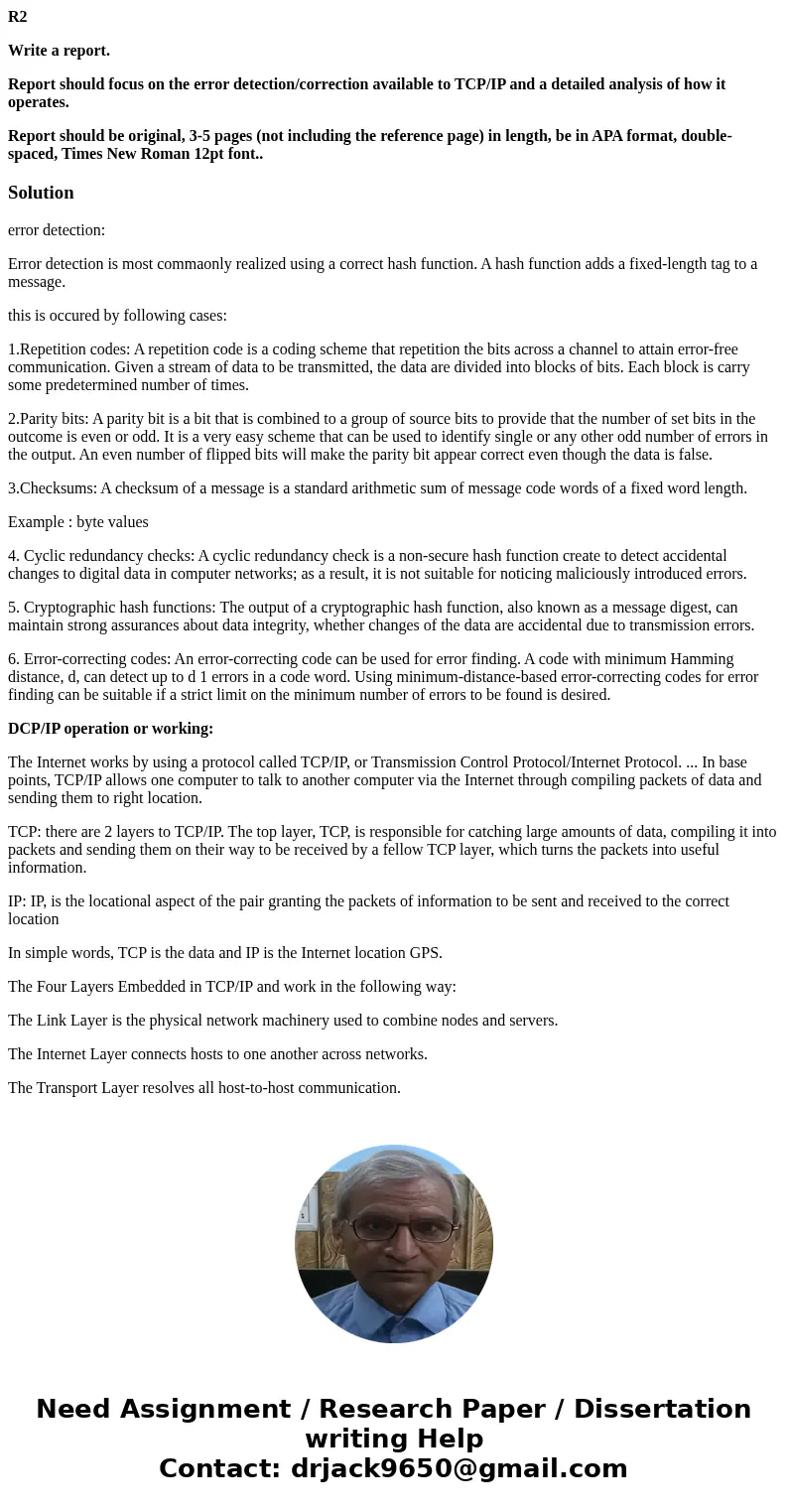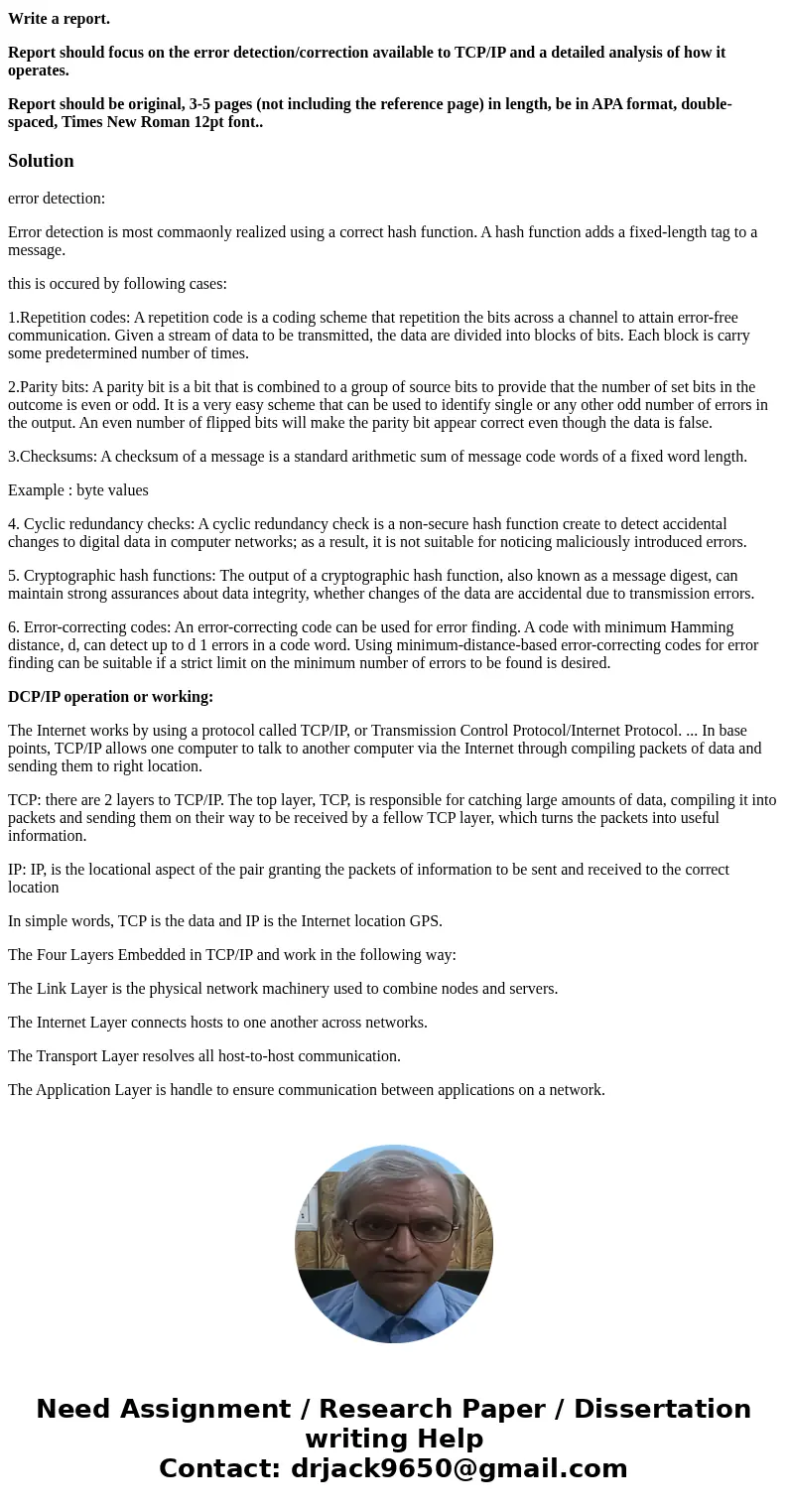R2 Write a report Report should focus on the error detection
R2
Write a report.
Report should focus on the error detection/correction available to TCP/IP and a detailed analysis of how it operates.
Report should be original, 3-5 pages (not including the reference page) in length, be in APA format, double-spaced, Times New Roman 12pt font..
Solution
error detection:
Error detection is most commaonly realized using a correct hash function. A hash function adds a fixed-length tag to a message.
this is occured by following cases:
1.Repetition codes: A repetition code is a coding scheme that repetition the bits across a channel to attain error-free communication. Given a stream of data to be transmitted, the data are divided into blocks of bits. Each block is carry some predetermined number of times.
2.Parity bits: A parity bit is a bit that is combined to a group of source bits to provide that the number of set bits in the outcome is even or odd. It is a very easy scheme that can be used to identify single or any other odd number of errors in the output. An even number of flipped bits will make the parity bit appear correct even though the data is false.
3.Checksums: A checksum of a message is a standard arithmetic sum of message code words of a fixed word length.
Example : byte values
4. Cyclic redundancy checks: A cyclic redundancy check is a non-secure hash function create to detect accidental changes to digital data in computer networks; as a result, it is not suitable for noticing maliciously introduced errors.
5. Cryptographic hash functions: The output of a cryptographic hash function, also known as a message digest, can maintain strong assurances about data integrity, whether changes of the data are accidental due to transmission errors.
6. Error-correcting codes: An error-correcting code can be used for error finding. A code with minimum Hamming distance, d, can detect up to d 1 errors in a code word. Using minimum-distance-based error-correcting codes for error finding can be suitable if a strict limit on the minimum number of errors to be found is desired.
DCP/IP operation or working:
The Internet works by using a protocol called TCP/IP, or Transmission Control Protocol/Internet Protocol. ... In base points, TCP/IP allows one computer to talk to another computer via the Internet through compiling packets of data and sending them to right location.
TCP: there are 2 layers to TCP/IP. The top layer, TCP, is responsible for catching large amounts of data, compiling it into packets and sending them on their way to be received by a fellow TCP layer, which turns the packets into useful information.
IP: IP, is the locational aspect of the pair granting the packets of information to be sent and received to the correct location
In simple words, TCP is the data and IP is the Internet location GPS.
The Four Layers Embedded in TCP/IP and work in the following way:
The Link Layer is the physical network machinery used to combine nodes and servers.
The Internet Layer connects hosts to one another across networks.
The Transport Layer resolves all host-to-host communication.
The Application Layer is handle to ensure communication between applications on a network.


 Homework Sourse
Homework Sourse